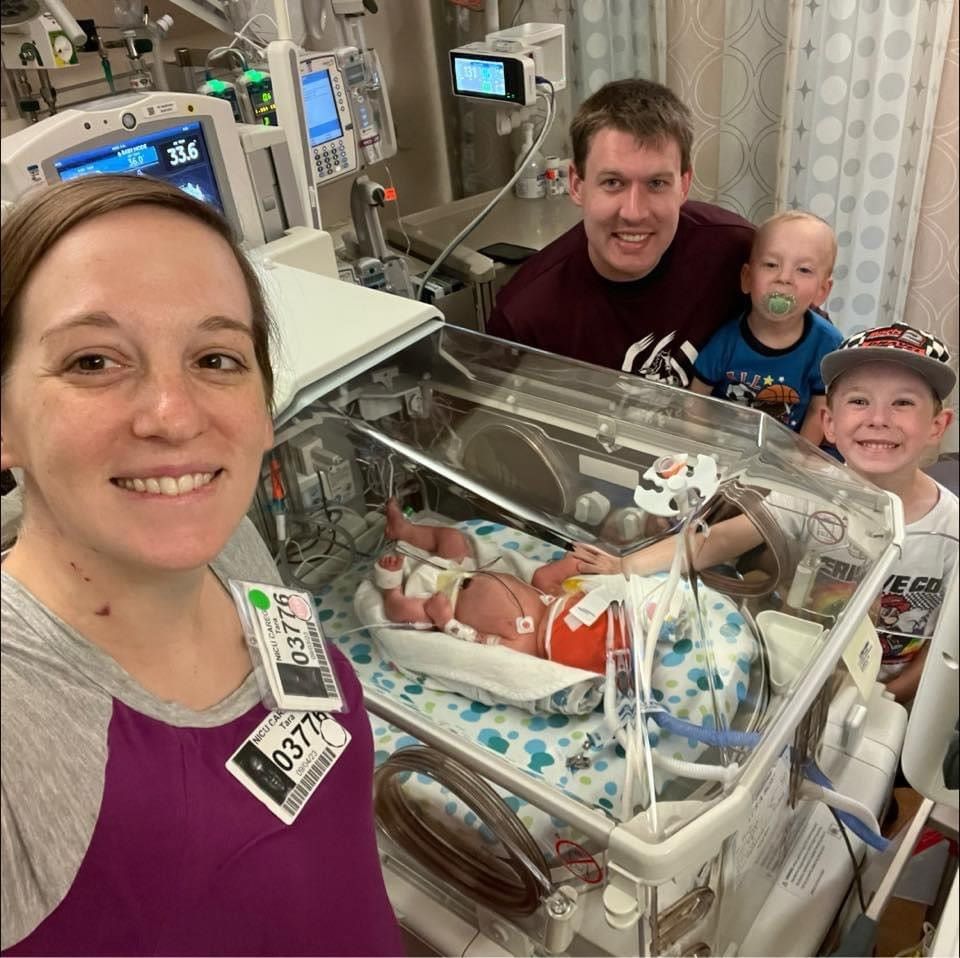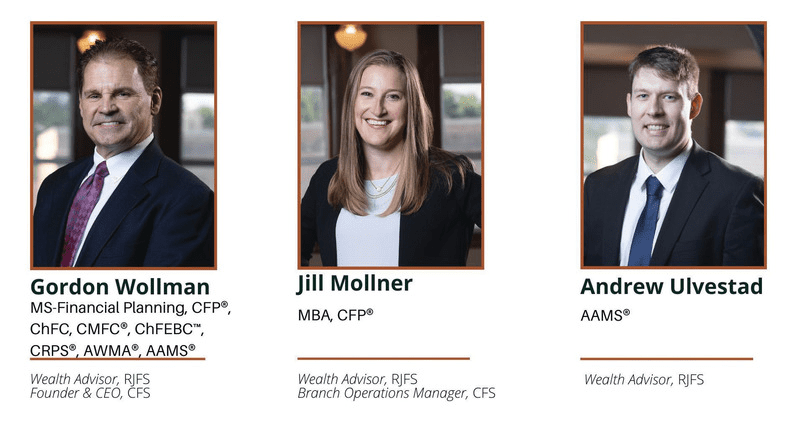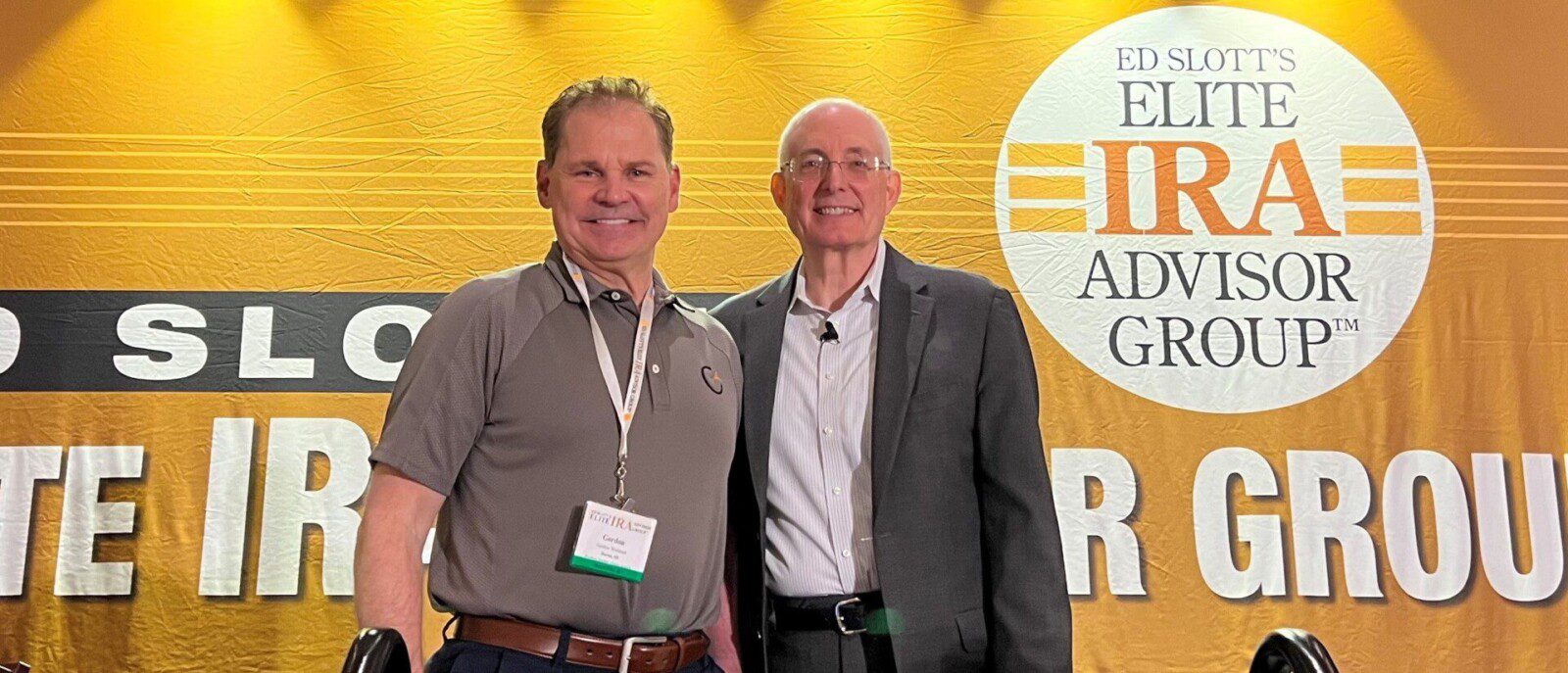Ulvestad Family Welcomes Baby Theo!
"I know you are scared."
Thankful to work with the best professionals in the area and introduce baby Theo!
Your unique aspirations are the heart of the Cornerstone Experience®, a personalized journey to craft a clear vision and help you tailor a strategic financial plan to dream, build, and lead your life. As your trusted partner we are dedicated to cultivating an extraordinary relationship with you. Transparency, trust, mutual respect, and open communication helps ensure you understand the value you’re receiving every step of the way.
As I approach my five-year work anniversary, my work family and our team’s dedication to delivering lasting value means more than ever. Our diverse and talented team continues to advance our comprehensive systems and processes, leaving nothing to chance as we help you navigate complex financial situations and pursue your financial goals. Our internal Investment Committee, backed by data and meticulous planning, helps ensure a high level of conviction in our strategies.
Cornerstone requires wealth advisors to hold the CFP® (Certified Financial Planner) designation or to be working to complete the rigorous certification process. The CFP® designation is considered the standard of excellence in financial planning. Gordon (Wollman) earned his CFP® certification in 2000, Jill (Mollner) in 2006, and I am currently working to complete the CFP® testing, a process that typically takes 18-24 months.
Forbes recognized our team on their Best in State Wealth Management Teams list earlier this year, a testament to our exceptional service and commitment to you. Gordon has been recognized in prestigious publications such as the Barron’s Top 1200 Advisor list and Forbes Best in State Wealth Advisor list, underscoring his expertise and leadership in the wealth management industry. You can find details of these and other recognitions here.
My wife, Tara, and I have reflected on a few of these principles since her 20-week ultrasound for our baby a few months ago. At that appointment we learned the baby was healthy, but Tara was battling a serious condition that could cause premature labor. Forgive me for not going into detail, the talk of anything medical makes me queasy!
The doctor, knowing how worried we were, put her hand on Tara’s and said “I know you are scared. I want you to know that I am one of the few doctors in the state who specializes in these cases.” That single sentence gave us confidence we were working with the right person.
On September 2nd, during Tara’s second extended stay in the hospital, the doctor told us waiting to deliver was simply too high-risk. So, despite Tara being only 32 weeks along, things were set in motion for us to have a baby the following day. We met with specialists from multiple departments and learned that Tara would be put to sleep to have the baby via C-section, immediately followed by a major surgery. I’m somewhat embarrassed to say I passed out during this discussion. Did I say medical talk makes me queasy? Hospital staff had to bring me water and a cold wet towel. Thankfully, my wife is stronger than I am!
We met again with the doctor from Tara’s ultrasound. She told us they’d lined up the very best people in each department and assured us we’d be getting the best care possible. Everything would be focused on Tara since no other major surgeries were planned.
At 6:30am the next morning I walked with Tara to the testing required before surgery. When she and I hugged goodbye, we didn’t know if we’d ever see each other again. I wasn’t allowed in the operating room because of the number of people involved in the surgery, so staff walked me to a waiting room and explained I’d get updates via text message. I didn’t know what to expect over the next couple of hours.
At 7:32am I got the first text message – the operation had begun. At that point, I had already covered a mile, anxiously pacing the waiting room. Being early Sunday morning, it was just me and a staff member working at a computer.
About 5 minutes later I received another text that the operation was going well. Then, no news for over an hour. What had happened? I hadn’t asked what text updates I would get if things didn’t go well! The staff member at the computer hadn’t heard anything either and went to find someone in the operating room. They came back to announce we had a healthy baby boy at 7:46am (September 3rd). I was able to see a sleeping Baby Theo in the NICU. Wow, I was one proud dad! It was another six hours before I was finally able to talk with Tara, who also ended up doing amazing.
Theo and Tara are both doing awesome. All of your thoughts and prayers are so appreciated!
In sharing the full story I’m being a little more vulnerable than normal. But, I felt it was important. If you’ve seen my commercial online or on TV, I talk about how important it is to work with a professional in all aspects of life, including financial planning. I’m thankful that my family and I were able to work with the best professionals in the area when it came to Theo’s birth and Tara’s surgery.
The awards and education I mentioned earlier don’t define the Cornerstone Team of professionals, but I’m thankful to be part of a company that expects each team member to continue to grow in knowledge and seek excellence. Just like the doctors who helped us at the hospital, we too can sit down with you, put our hand on yours and say “We’ve done this before. And we are one of the experts in this subject matter.” Our desire is to take care of you the best we possibly can.
At the hospital, I was amazed how multiple departments and specialists worked together to take care of us and our baby. On the day of the surgery, we were comforted when our doctor said, “You are our number one priority. Each department, from anesthesiologists to nurses, urologists to the NICU staff and more, will all be focused on you.” The same is true at Cornerstone. We have a big team and our number one priority is YOU. If your primary advisor is out like I have been, another advisor is there
to help and give the same guidance and advice.
We meet with you during regularly scheduled review appointments, host events, provide weekly updates via email, and check-in regularly through phone calls. But, between updates you may be a little like me in that waiting room – concerned and pacing anxiously. The market can make us all feel a little anxious sometimes. In the waiting room I trusted and relied on the doctors in the operating room. I trusted their expertise and desire to do what was best for my family.
We at Cornerstone don’t take YOUR trust for granted. I hope you understand how much we care and want to do what is best for you. Thank you for your continued trust.
NOT A CORNERSTONE CLIENT?
Call 605.357.8553 or email cfsteam@mycfsgroup.com today to schedule a complimentary, no-obligation appointment with one of our wealth advisors.

Any opinions are those of Andrew Ulvestad and not necessarily those of Raymond James. This content is for general information only and is not intended to provide specific advice, an endorsement, or recommendations for any individual. Raymond James Financial Advisors do not render advice on tax or legal matters. You should discuss tax or legal matters with the appropriate professional.Past performance is no guarantee of future results. Investing involves risk, including possible loss of principal. Investing involves risk and you may incur a profit or loss regardless of strategy selected, including diversification and asset allocation. Holding stocks for the long-term does not insure a profitable outcome. Investing in stocks always involves risk, including the possibility of losing one’s entire investment. No strategy assures success or protects against loss. To determine what is appropriate for you, consult a qualified professional. Excerpted from Newsletter_Insights October Issue 4 2023.10.27 #313959













